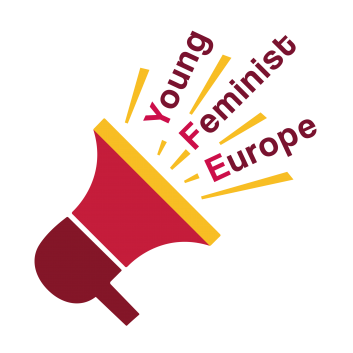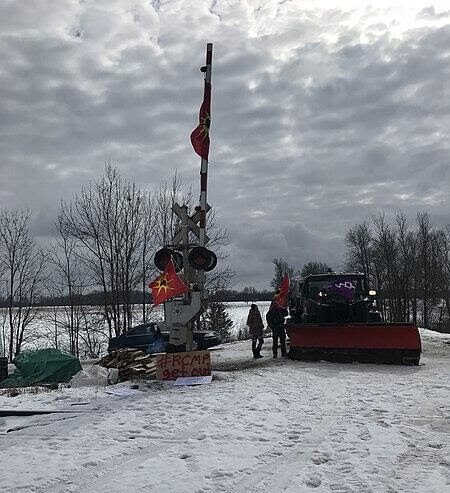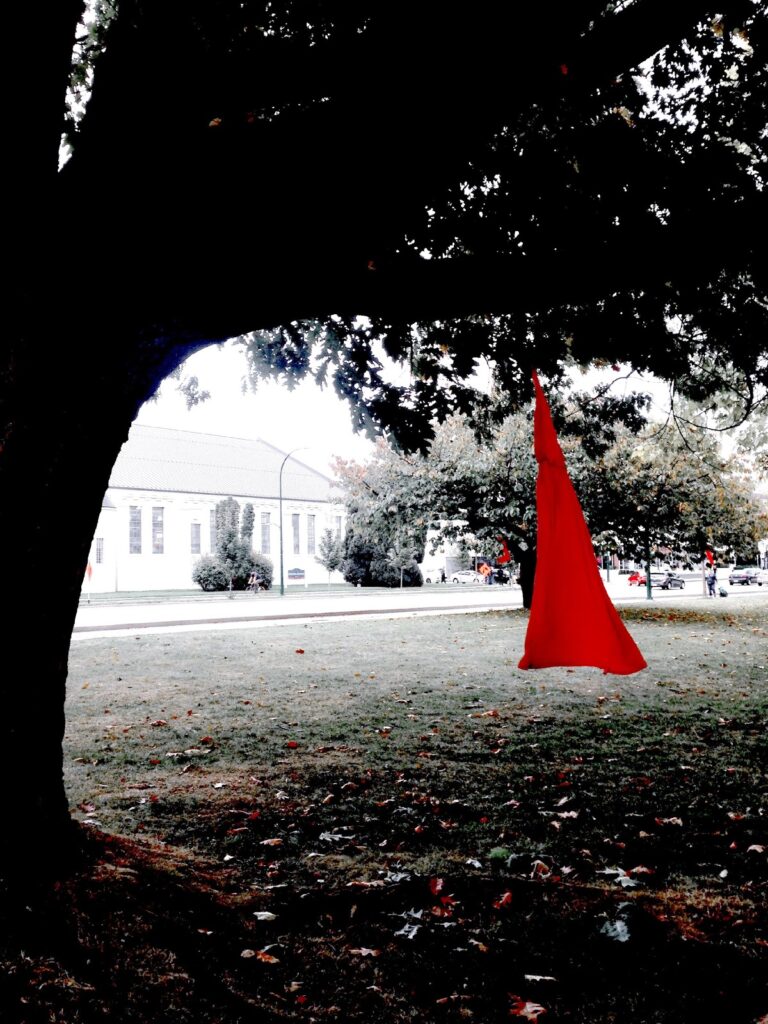If protests led by female land-defenders have revealed anything, it is the “boundless love that Indigenous women have for their families, their lands, their nations, and themselves as indigenous people”. These words were shared by Anishinaabe feminist Dory Nason in relation to the Idle no More protests, which first marked the Canadian political landscape almost ten years ago.
Last year saw a new series of protests of indigenous land defenders, led by the matriarchs of the WWet’suwet’en Nation against a pipeline built on their territory in 2019. This decades-long standoff culminated in the largest protests ever in Canada, with the aim of standing in solidarity with indigenous land defenders. In February 2020, the #shutdownCanada protests led to the closure of roadways and railways, freezing entire sectors of the economy in a way that even the pandemic had yet to match.
A red dress symbol of violence against aboriginal women is symbolic of the unanswered questions regarding missing and murdered indigenous women.
The Wet’suwet’en people live on a territory of land in the northern interior of British Columbia that has never been ceded to Canada. Unceded territories mean there are no treaties that allow Canada to access the lands of the Wet’suwet’en uninhibitedly. However, there has been an effort for more than a decade to lay a pipeline across the territories. The Wet’suwet’en people remain divided on it. The hereditary chiefs who govern the bands living on unceded territory vehemently oppose the pipeline. They oppose the pipeline because they fear it will lead to destruction on their land and risk polluting their waters, in addition to the problematic matter that the pipeline will export fossil fuels.
The Wet’suwet’en people who support the pipeline are from the reserve, whose chiefs have approved the pipeline to be constructed through their territories in exchange for financial compensation and work opportunities. To position this pipeline matter as a feminist issue, coastal gas link offered jobs related to the pipeline, specifically to indigenous women. Indigenous women in Canada have been subjugated to systemic and symbolic violence from colonial structures since Canada became a settler-colonial state. The Wet’suwet’en territories are near highway 16, also known as the highway of tears, as so many indigenous women were missing or murdered alongside the highway. The tears refer to their families’ cries as they struggle to find answers and come to terms with the tragedy in vigils. A red dress symbol of violence against aboriginal women is symbolic of the unanswered questions regarding missing and murdered indigenous women. It has also been a feature in the #shutdownCanada protests.
Disappearances and murders of indigenous women have yet to be solved and only recently been addressed by a federal inquiry. While offering jobs to indigenous women may be a way of rectifying a wrong, this does not change the fact that the laying of a pipeline encroaches on an indigenous sovereign territory that has not signed a treaty to permit a colonial relationship.
Boundless love for land and themselves as indigenous people
The love that indigenous women have over themselves as indigenous people says much about Canada’s plight. The 1876 Indian Act in Canada has been the backbone of indigenous and settler relations in Canada since it became a country. This policy was premised on assimilating indigenous peoples into Canada, thereby denying or reducing the state’s burden to respect indigenous peoples’ territories and their treaty rights. While there are many aspects of colonial violence outlined in the act, one of the most relevant aspects of gendered violence is the control of who has status as”a “Indian” in Canada. The term Indian refers to the outdated and appropriated term used to label indigenous Canadians in Canada. Not every indigenous person has status granting them the right to live on the reserve with their family and have housing rights—indigenous women and their children lost their status if they married a non-indigenous person. For more than a century, this marrying out clause was not considered wrong because it was fair to the Canadian courts; the woman would simply become Canadian. However, if she were to separate or divorce, she would be separated from her family and not have a right to live on her indigenous reserve. This rule only affected women; indigenous men who married non-indigenous people could keep their status.
As we work hard to combat climate change worldwide, with weekly Fridays for future protests and being more mindful of how our individual choices are affecting our carbon footprint, it is also becoming increasingly clear that the process of climate change is exacerbating inequities.
While this rule was overturned in 1985 by the UN Human Rights Committee in the Lovelace vs. Canada case which reinstated the status of many women, the ruling came too late for some. The repercussions of this rule against indigenous women are still felt today. This explains why many indigenous women have fought to undermine colonialism and violence towards their identity. It is the precarity of their status that have led these women to engage in potent protests for land and indigenous rights.
The consequences of the protest
Despite a nationwide protest in solidarity with Wet’suwet’en people, the British Columbia (BC) Supreme court’s injunction to build the pipeline was upheld. Wet’suwet’en managed to come to an agreement that has not been released publicly with coastal gaslink once the Royal Canadian Mounted Police and army agreed to leave the site of the protest. There are already two spills of fuel related to the pipeline which are being investigated. It is hard not to feel like the indigenous people, particularly women in the BC interior, have been shortchanged by the government. There has been empty rhetoric regarding justice for missing and murdered aboriginal women—when a pipeline must be built for an industry even if it is not delivering a profit at the moment, these women must accept the situation or be arrested. They are considered to be trespassing on their own lands for resisting the construction of a pipeline due to their refusal to allow more oil to be taken from the ground and being sold, and are accused of being complicit in promoting climate change.
In a settler-colonial society like Canada prone to resource extraction and land exploitation, many territories across the country have various settler-colonial infrastructure elements running through their territories. The railroads are one of the notable symbols. Groups opposing yet another pipeline being laid in Canada, mainly when oil and gas prices are at a record low, have blocked the rail lines across Canada which were also running through indigenous territories, effectively shutting down large levels of commerce.
As we work hard to combat climate change worldwide, with weekly Fridays for future protests and being more mindful of how our individual choices are affecting our carbon footprint, it is also becoming increasingly clear that the process of climate change is exacerbating inequities. However, it is also relevant to consider the colonial structures that still exist today and the importance of resisting resource extraction and supporting land defenders seeking to protect their rights, territories, and title, and how this is ultimately linked to fighting the patriarchy.





![Ignoring the subject: the discussion about VAW in Poland – Nie znam się to się wypowiem: czyli o przemocy wobec kobiet w Polsce [EN/PL]](https://www.youngfeminist.eu/wp-content/uploads/2015/11/images-150x150.jpg)

Average Rating